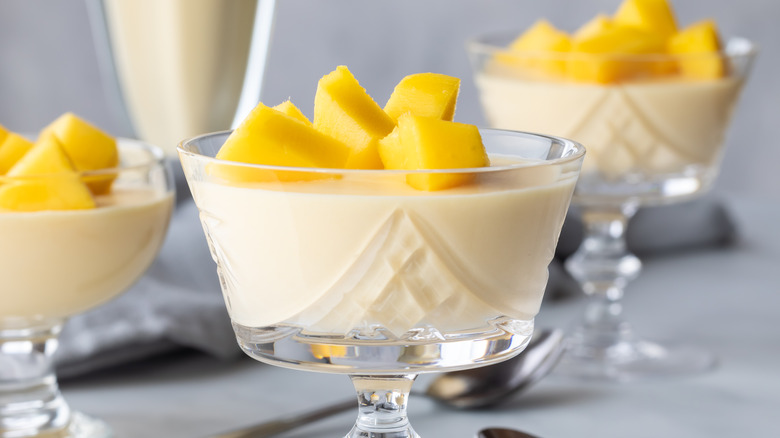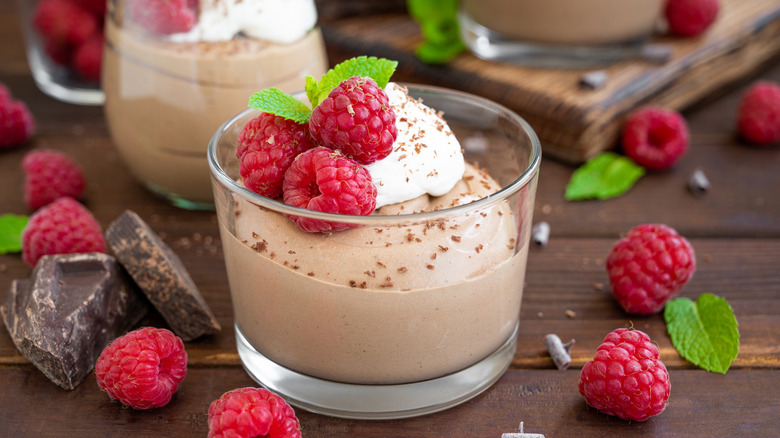Why Powdered Gelatin Is Preferred When Making Mousse
Whether it's strawberry, vanilla, or a classic chocolate dessert, mousse is the perfect way to satisfy one's sweet tooth. A mousse is a dense, foamy dish made with whipped egg whites and cream, and it is traditionally served cold (via Britannica). They can be savory as well as sweet, but the sugary desserts are the most common to stumble upon. Mousse can also be piped into pastry crusts, served alongside fresh fruit, or eaten by itself. It is an incredibly rich dish, one that is versatile and a textural delicacy.
The whipped cream and egg whites give this dish an incredibly soft, foamy, and velvety consistency, but it's also what makes the mousse-making process a bit difficult. If the air collapses out of the cream and eggs, the mousse loses its unique structure and much of its desirability. One of the best ways to prevent the mousse from completely deflating is by adding a bit of powdered gelatin into the mix.
A little extra stability
Using powdered gelatin in a mousse recipe is no new trick. Even those avoiding traditional gelatin in favor of agar-agar — a neutral gelatin made from seaweed (via Food52) — can agree gelatine is one's best friend when making a mousse, specifically powdered gelatin.
Masterclass explains the difference between sheet and powdered gelatin. Sheets are more difficult to combine with other ingredients; meanwhile, powdered gelatin dissolves readily into the water and is much easier to mix into a mousse. It also gives the mousse its iconic, delicate texture.
Good Things Baking states that non-plant-based gelatin is made of animal collagen, which becomes rubbery when it comes into contact with liquid. It is also perfect for mousse because it is clear, so it won't change the color of the recipe or the flavor; however, it will lend its rubbery nature to thicken the mousse and keep it from collapsing.

